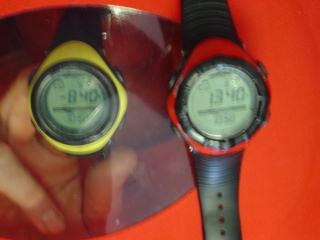
|
|
17 November, 2003
Just a short entry today because we have been at it long and hard all day and we have happy camper school tomorrow.
This morning we went to High Altitude School. Since we will be camping on the Beardmore Glacier at 6000 feet and working on various mountains above 12,000 feet, we are required to take this course to prepare us for the dangers associated with high altitude work.
Cerebral edema (swelling of the brain due to fluid leakage) and pulmonary edema (fluid in the lungs due to leakage) can become more than a slight inconvenience, they can kill you if not caught in time. As you go higher and higher in the atmosphere, the amount of oxygen that you can get into your bloodstream decreases. Although the ratio of oxygen in the atmosphere remains the same, the available pressure to force it into the lungs decreases. When this happens you can develop mild nausea, headache, shortness of breath and fatigue. These are the leading symptoms of Altitude sickness, and if not caught in time it can lead to HACE (High Altitude Cerebral Edema) or HAPE (High Altitude Pulmonary Edema) which can cause death. One of the techniques they use if a person is in respiratory distress is to place them in a Gamow bag, which is a portable hypobaric chamber. The patient is placed in the bag which is sealed and pressurized with a foot pump to as high as 2 PSI. This means the air pressure in the chamber is 2 pounds per square inch greater than the pressure outside the bag. Normal atmospheric pressure at sea level is about 14.7 PSI as you climb higher it becomes less since there is less air mass above you. A low pressure system (storm) also reduces the air pressure. The chamber effectively lowers the patient's altitude so if they are at 15,000 feet, they would feel as if they were at 9,000 feet. This may not seem like much, but it can save their life. During the class, one of the students got in the bag and we pressurized it to just over 1 PSI. Before he got in the bag, I gave him my watch that has an altimeter in it (it measures air pressure). The instructor's watch also has one so we set them both to read the same altitude (1340 feet) before we started to pressurize the bag. As we approached the 1PSI point, we noted the watch in the bag was reading -840 feet and the watch outside the bag remained at +1340 feet, a difference of 2,180 feet. So if the person was having trouble breathing, we effectively lowered his "altitude" over 2,000 feet without moving him from the room thus making it easier for him to breath!
These bags, along with drug therapy (Diamox) have saved many lives and have allowed people to work safely at altitude.
The rest of the day Nate, Peter and I spent our time at the project staging area where we get continued to get our equipment together and gather our food supplies for the expedition. The nonperishable supplies are obtained in the loft of the shed where our equipment is stored. It was like going to a supermarket but not having to pay for the food. We used a hand scanner to keep track of what we took and then received a printout of the supplies we had taken. What ever we do not use, we return at the end of the expedition. Well that's all for now, I need to get some sleep so I will be ready for Happy Camper school tomorrow.
Cheers,
Andy

Two Altimeter Watches, the yellow one in a Gamow bag and the red one out.
Contact the TEA in the field at
.
If you cannot connect through your browser, copy the
TEA's e-mail address in the "To:" line of
your favorite e-mail package.
|
